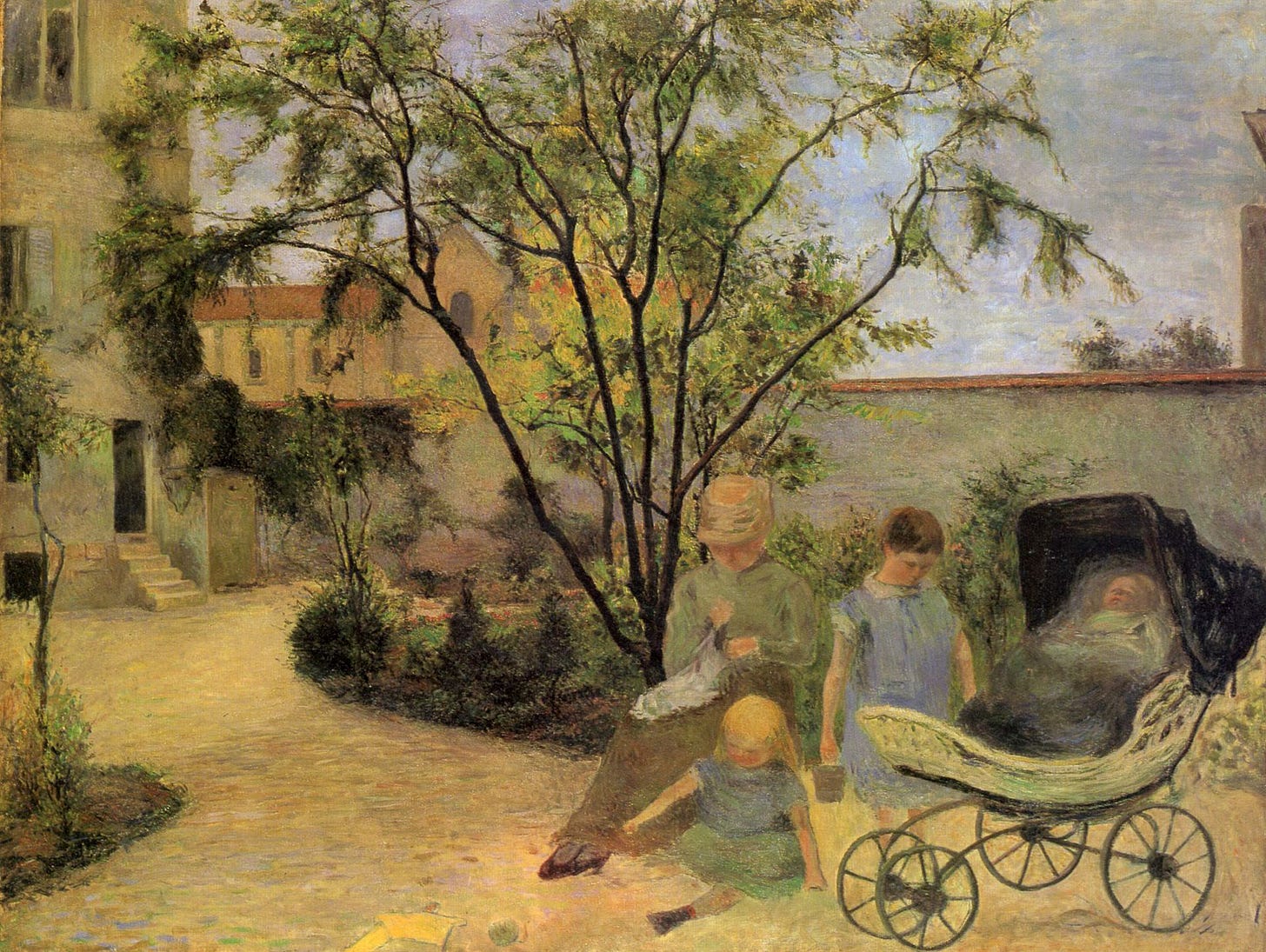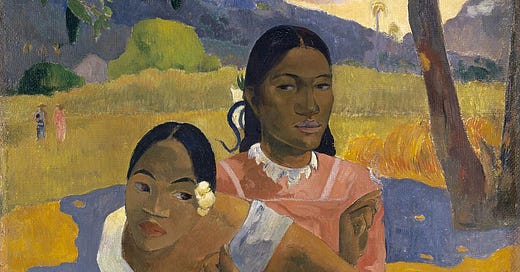There comes a moment — maybe mid-Zoom call while your neighbor’s cat seems to have more purpose than you, or when someone casually mentions they used to work in fintech (just like you) but opened a gallery in New York (wait, are they living my dream?) — when it hits you again:
“What if I just burn it all down and do something completely different?”
You know the drill: switch careers, do something useful for society, move somewhere exotic, finally start that small, weird business you always secretly dreamed of… or pick up that paintbrush. People are booking career coaches, everyone’s questioning everything — and yet, most still play it safe. Stay put. Scroll LinkedIn. Repeat.
But for once, let’s not look to tech bros, podcast prophets, or life coaches for advice — artists have been nailing career pivots since before it was cool.
Meet Paul Gauguin. Your Patron Saint of the Midlife Crisis Career Change.
Imagine being 35, fabulously successful as a Paris stockbroker, with a chic apartment in the 9th arrondissement. You’re married to a woman from a different culture (obviously — you're on trend), you’ve got several kids, and a closet full of tailored waistcoats. You dabble in painting on Sundays, maybe even hang with some scruffy artist circles that are très en vogue.
Then the market crashes. (Classic.) Your bourgeois lifestyle suddenly feels fragile. You’re tired of the champagne-and-chit-chat circuit anyway, and decide to move to another country (your wife’s) — to stay on trend, find a new job, and maybe pay fewer taxes. In this foreign environment, your inner artist starts yelling louder than your broker instincts. So what do you do? You go part-time. You paint more.

Your wife is unimpressed. Eleven years into the marriage, she hits you with the dreaded line:
“You’re not the man I married.”
(Rude, but fair.) She asks you to leave. You pack your brushes and your dreams and head off on what millennials would now call a “self-discovery sabbatical.”
There’s a Roman holiday, a return to Paris, side jobs, and some well-timed network reactivation (hello Pissarro, Cézanne, Seurat). With finances somewhat sorted and officially single, you decide that exotic places are the best places to find yourself — Panama, Martinique. There, in the tropical rain, dehydrated from dysentery and disillusioned with the narrow Western view of the world, something starts to shift.
Returned back with your mosquito bite souvenirs, you start embrace a new, bolder, flatter, more symbolic style — what we now call Cloisonnism. Your voice as a painter starts to solidify. With your adventures being a source of inspiration, you start looking for the next destination. Eventually, you set your sights on Tahiti— a place that will define your legacy, romanticize (and problematize) your persona, and later inspire writers like Somerset Maugham. It’s raw, beautiful, and couple of kids more — but also the backdrop for your most emotionally charged work (which, of course, will sell for 9 figures… after your death).
But What Does This Have to Do with You? You might not be dreaming of jungles or abandoning your family (please don’t), but Gauguin’s story is a reminder that a full-on reinvention is always on the table and it’s deeply human. It can be messy. Uncomfortable. But also? It can lead to your best, truest work.
So if you're 35 (or 45, or 70 — hello, Grandma Moses sold Sugaring Off for $1.36 million in her eighties), it’s not too late to hit refresh. Now I’m curious — what’s your secret dream? Dare to drop it in the comments — I’d love to hear it.
Art needs more eyes — and so does this blog.
It’s free to read, but only grows if it travels.
Liked it even a bit? Tap the heart.
A line stuck with you? Drop it in a comment.
Smiled once? Hit restack.
Want to keep this writing alive? Send it to a curious friend to subscribe.





To write a book for children ☺️
so relevant to me - I often think that I’m too old to make a big shift. It was a great reminder that it’s not true. Thank you!